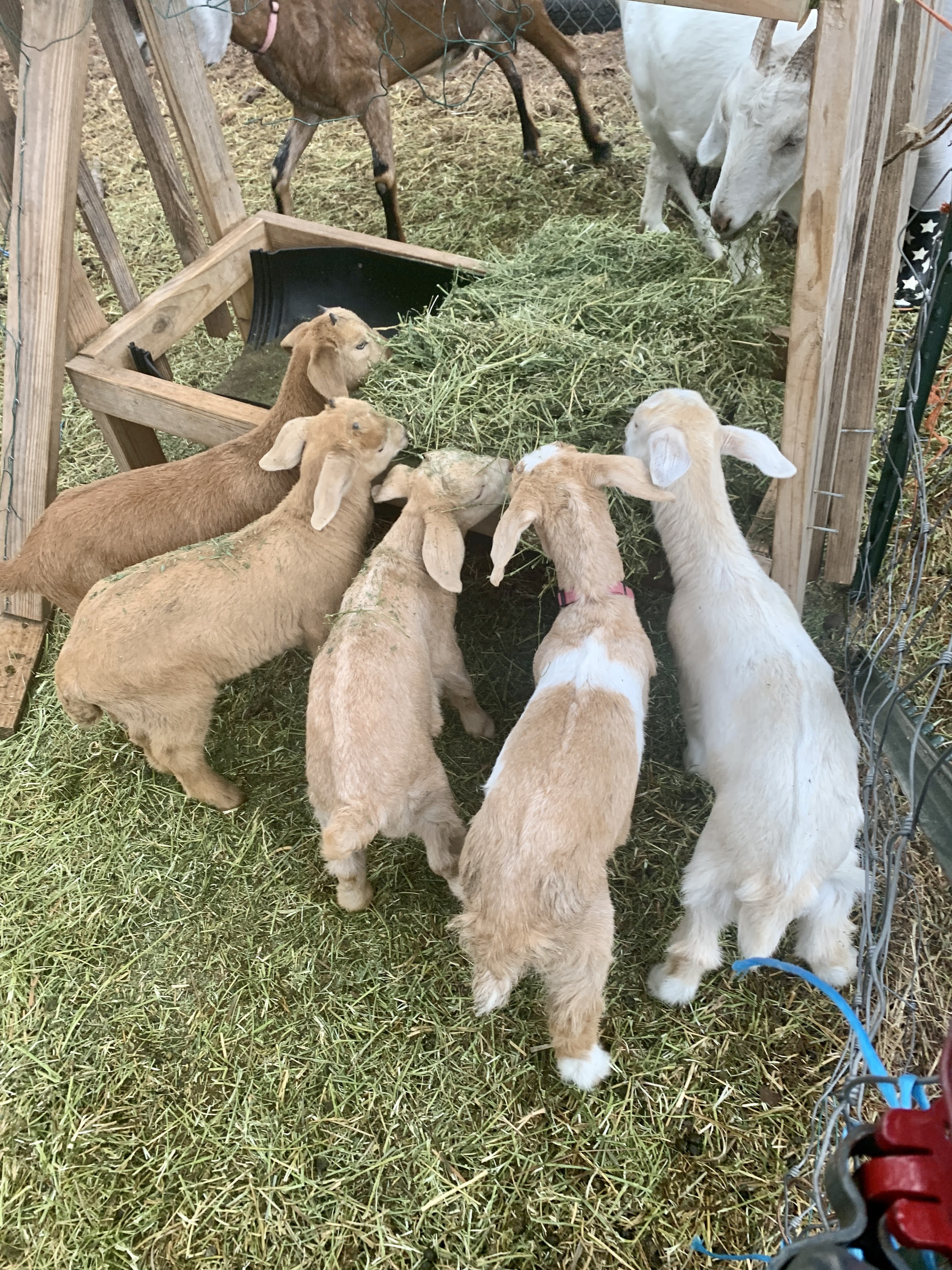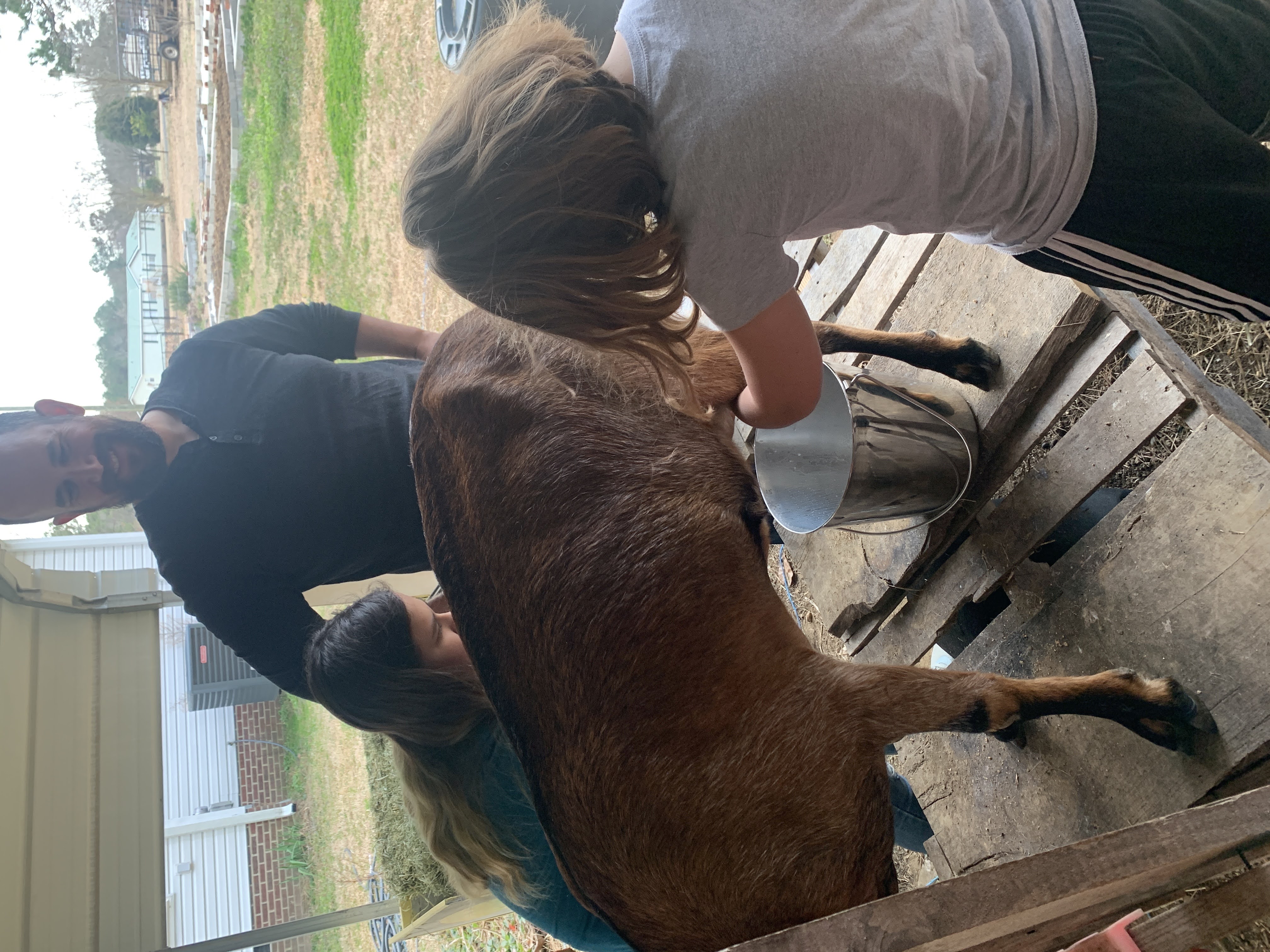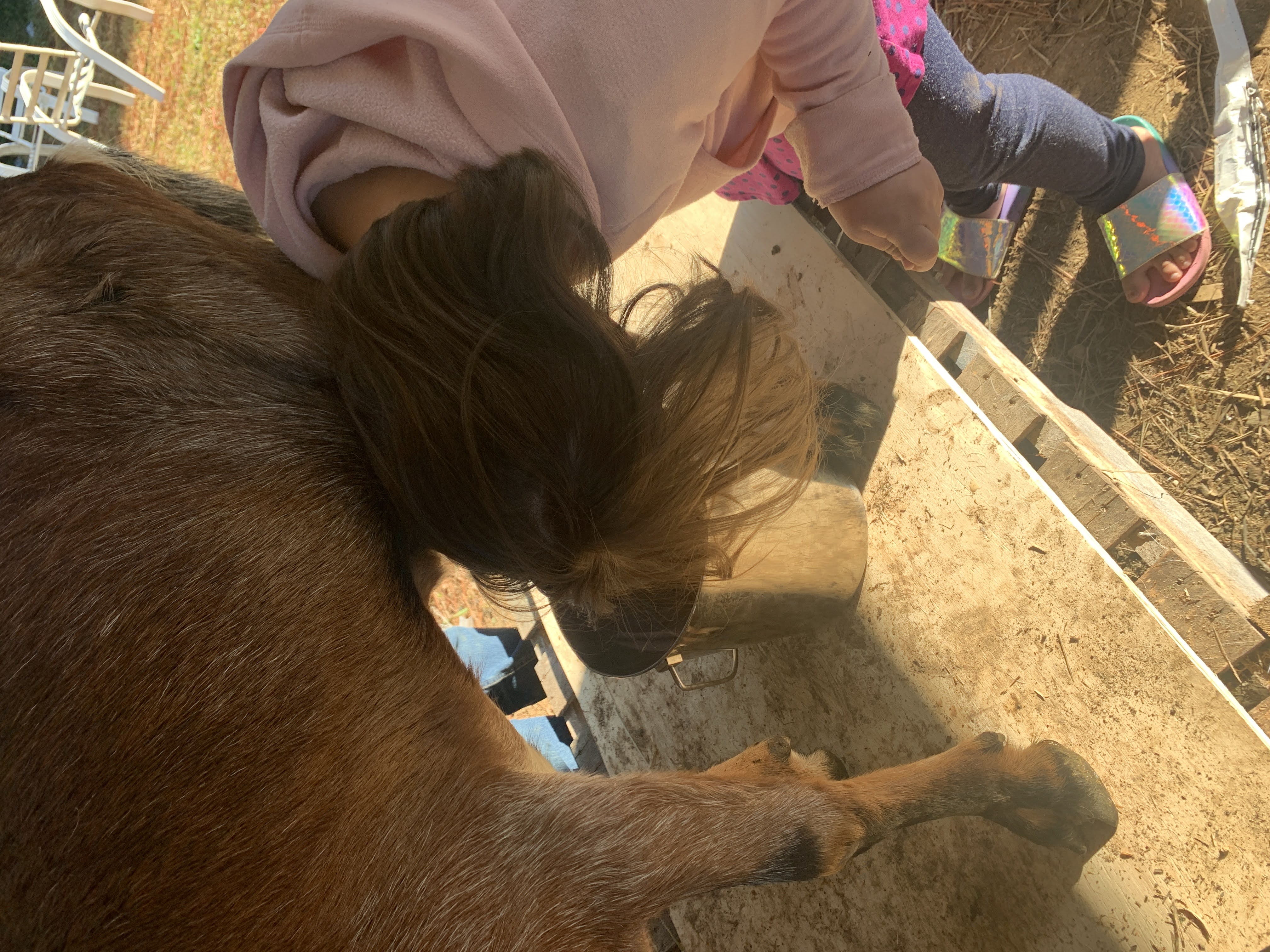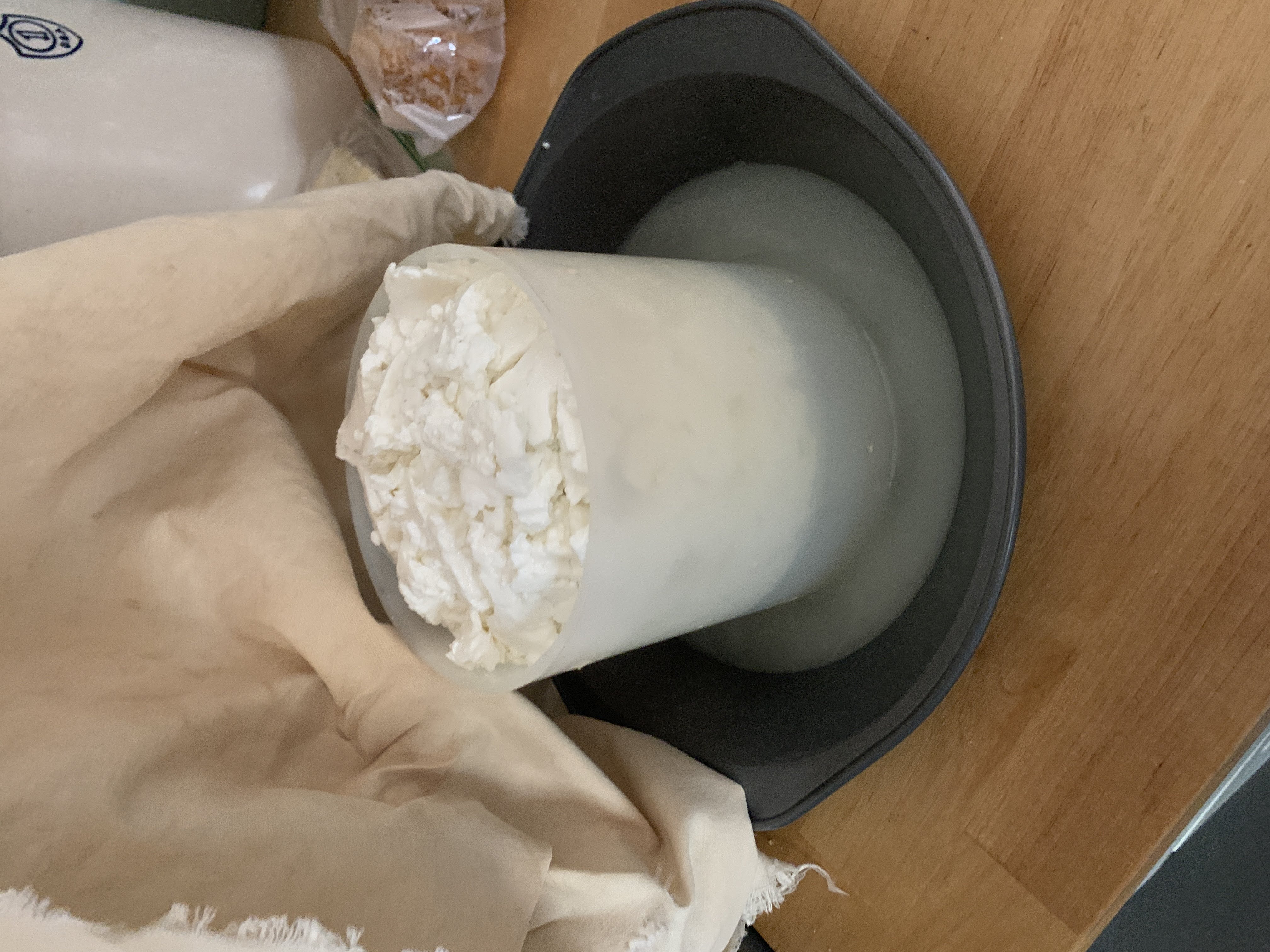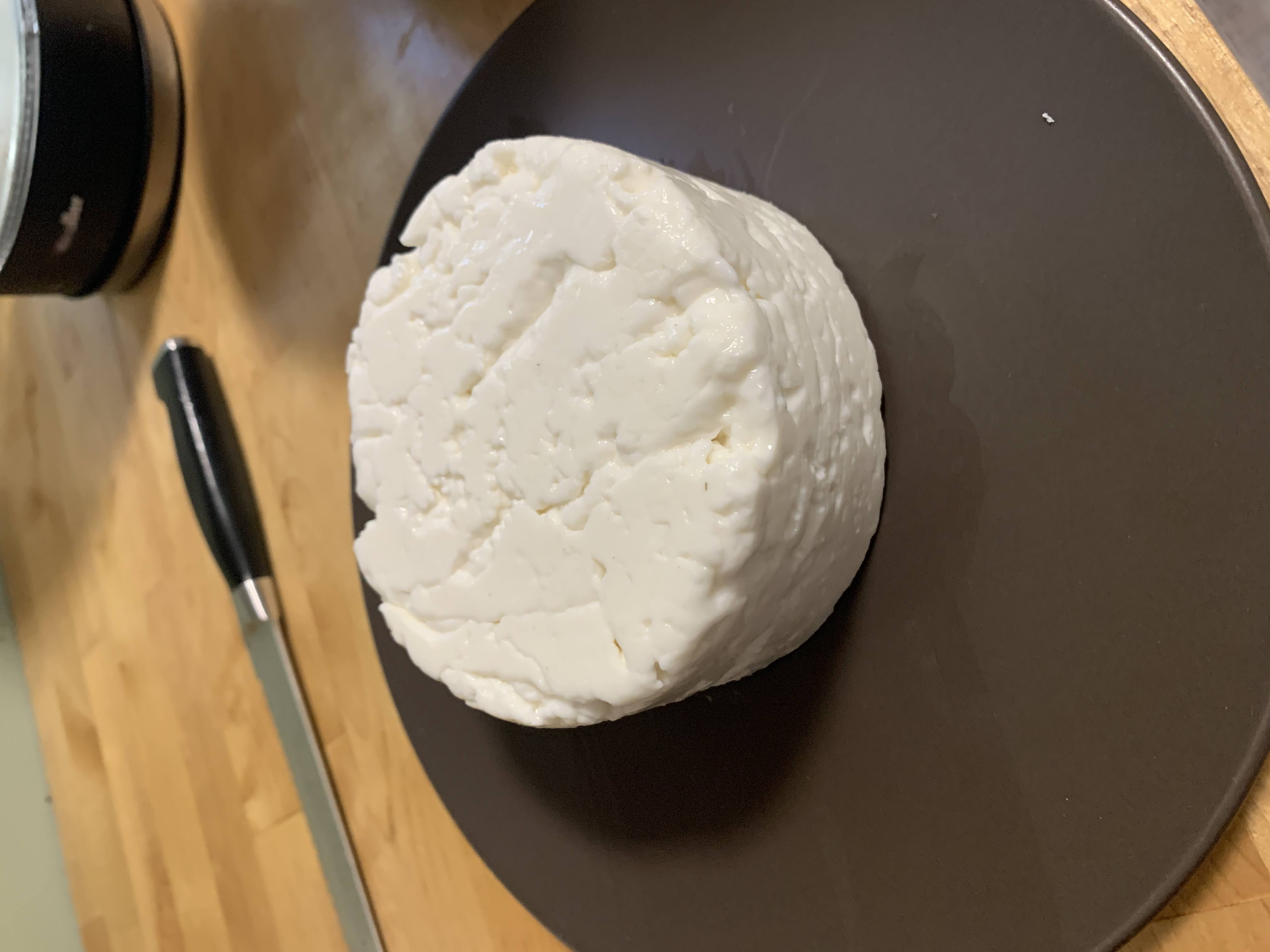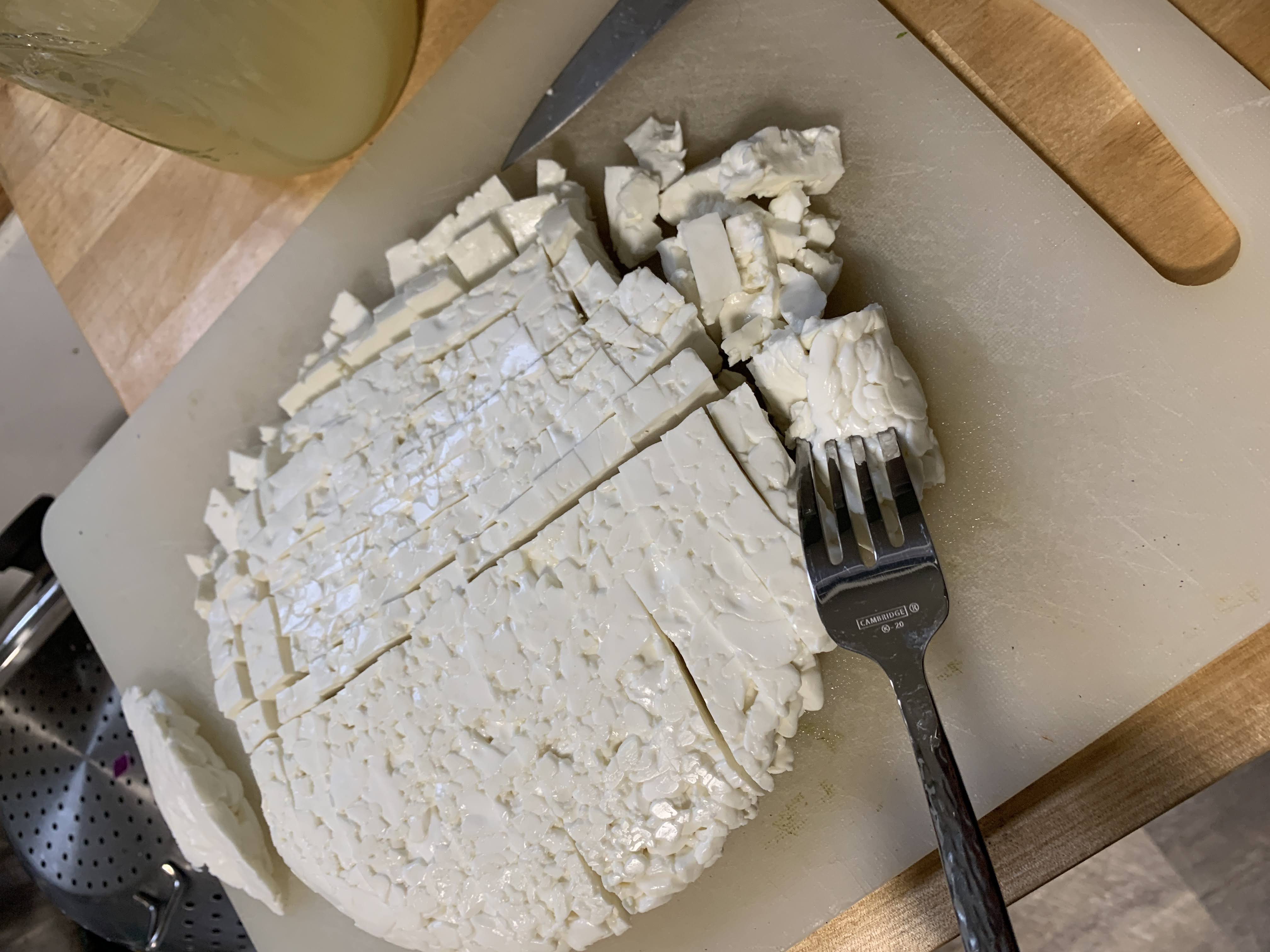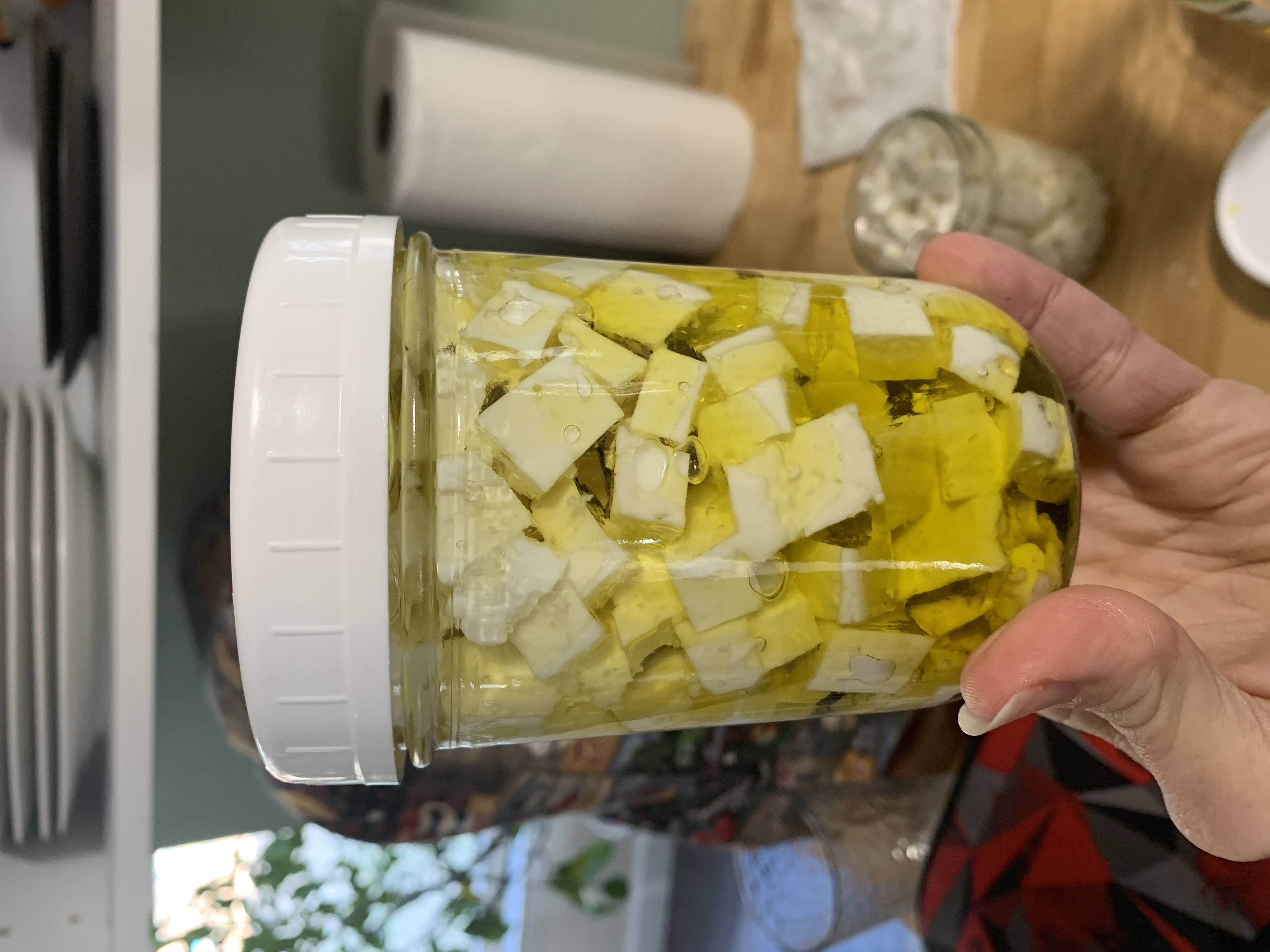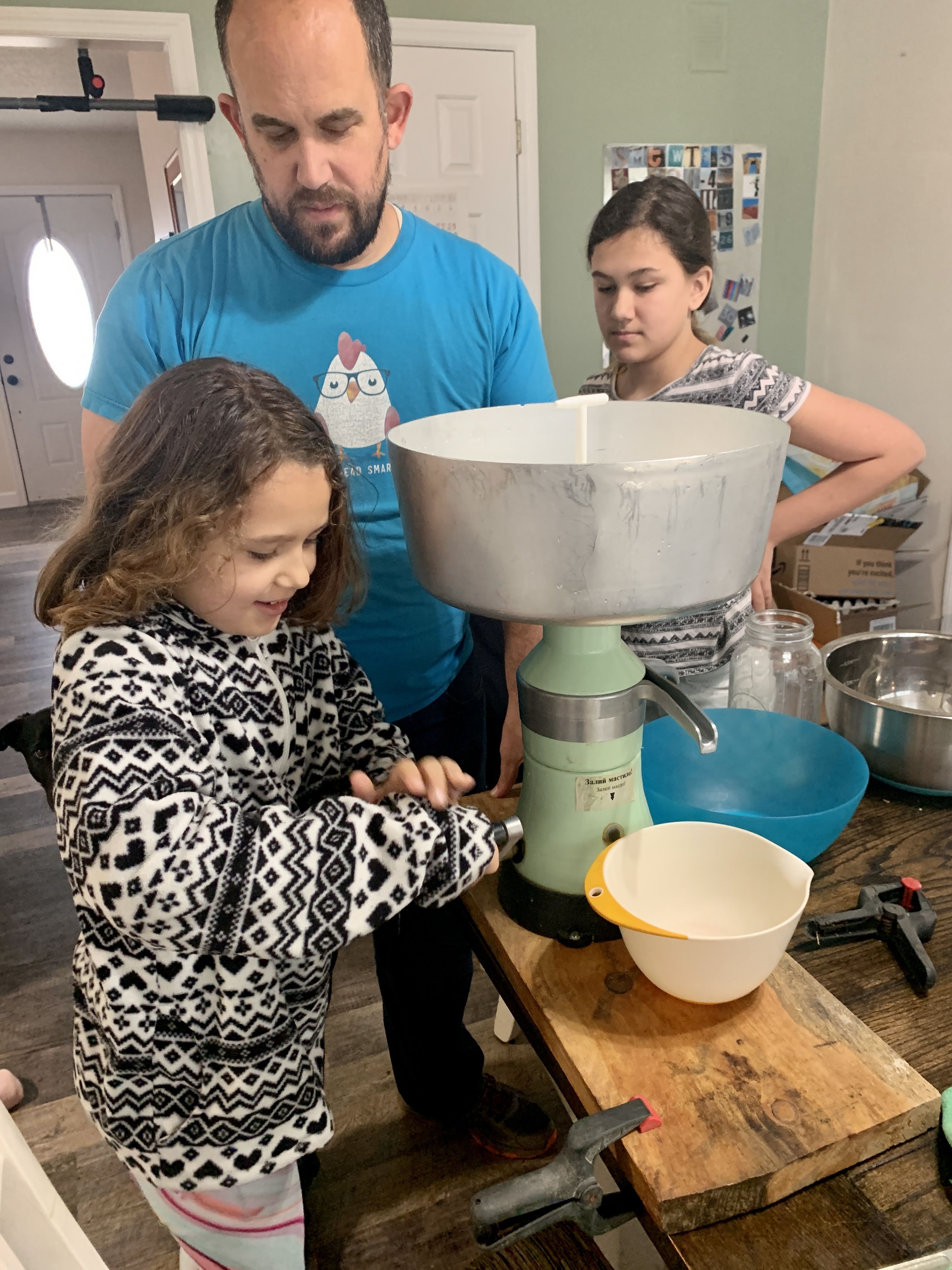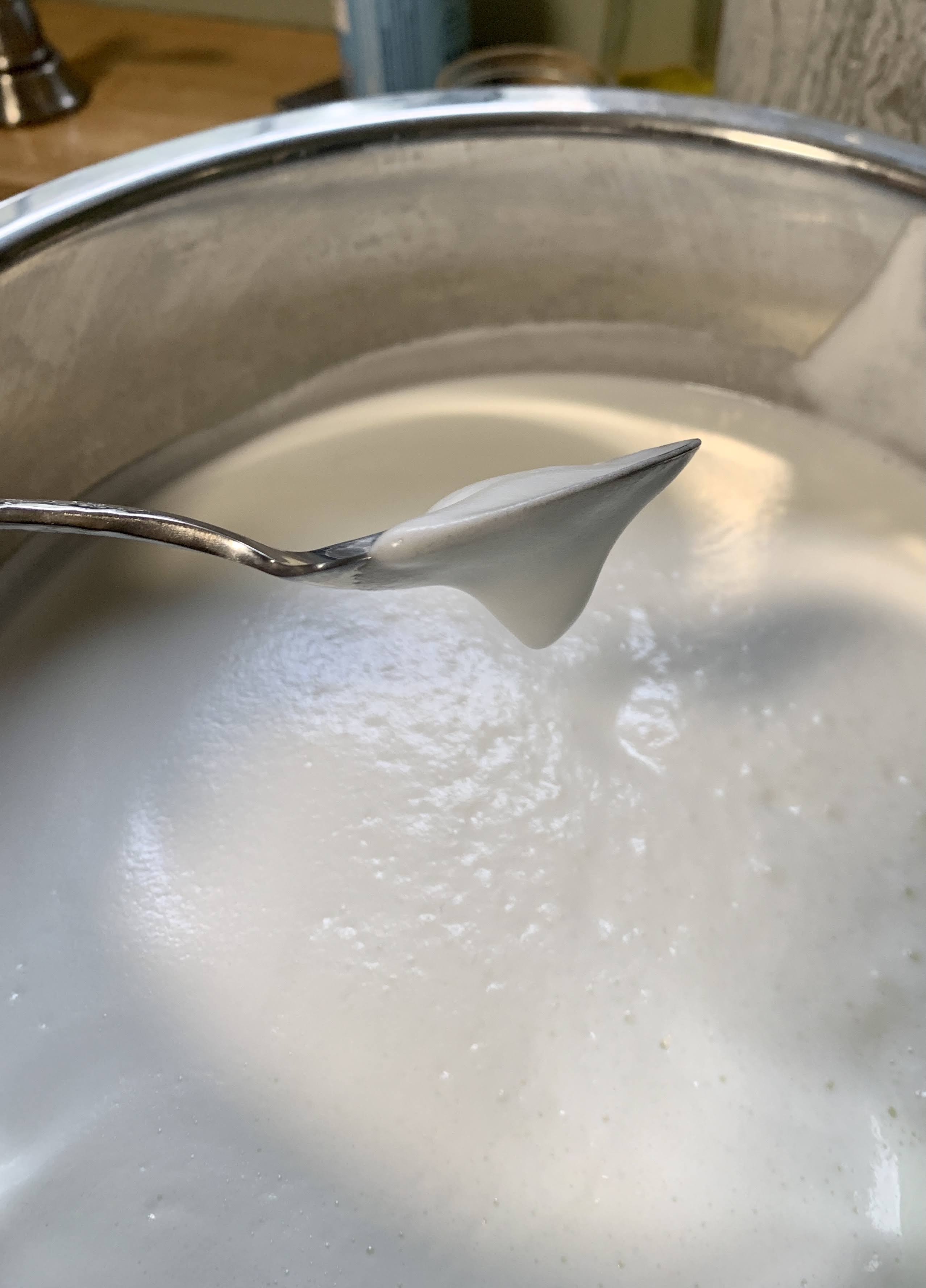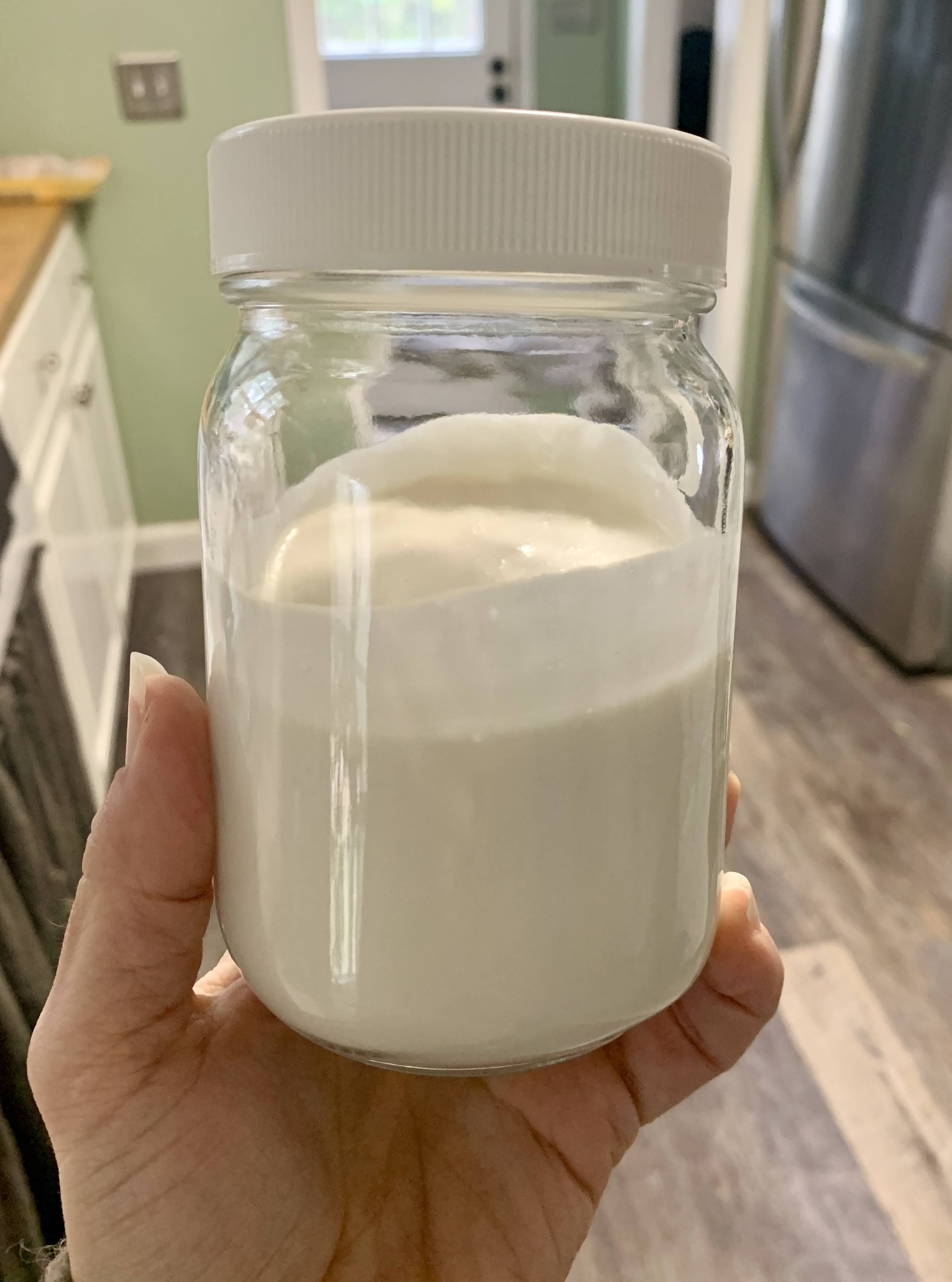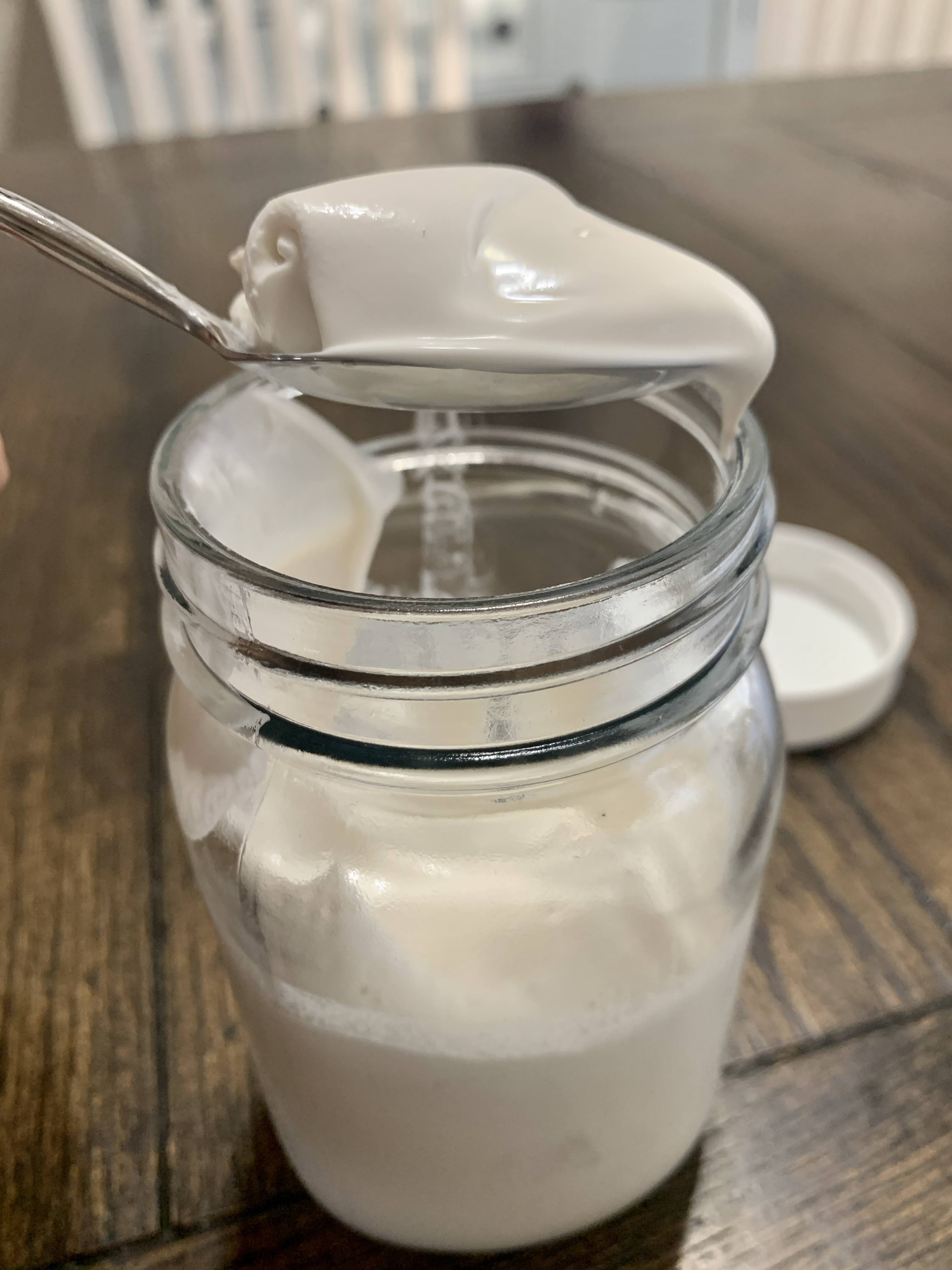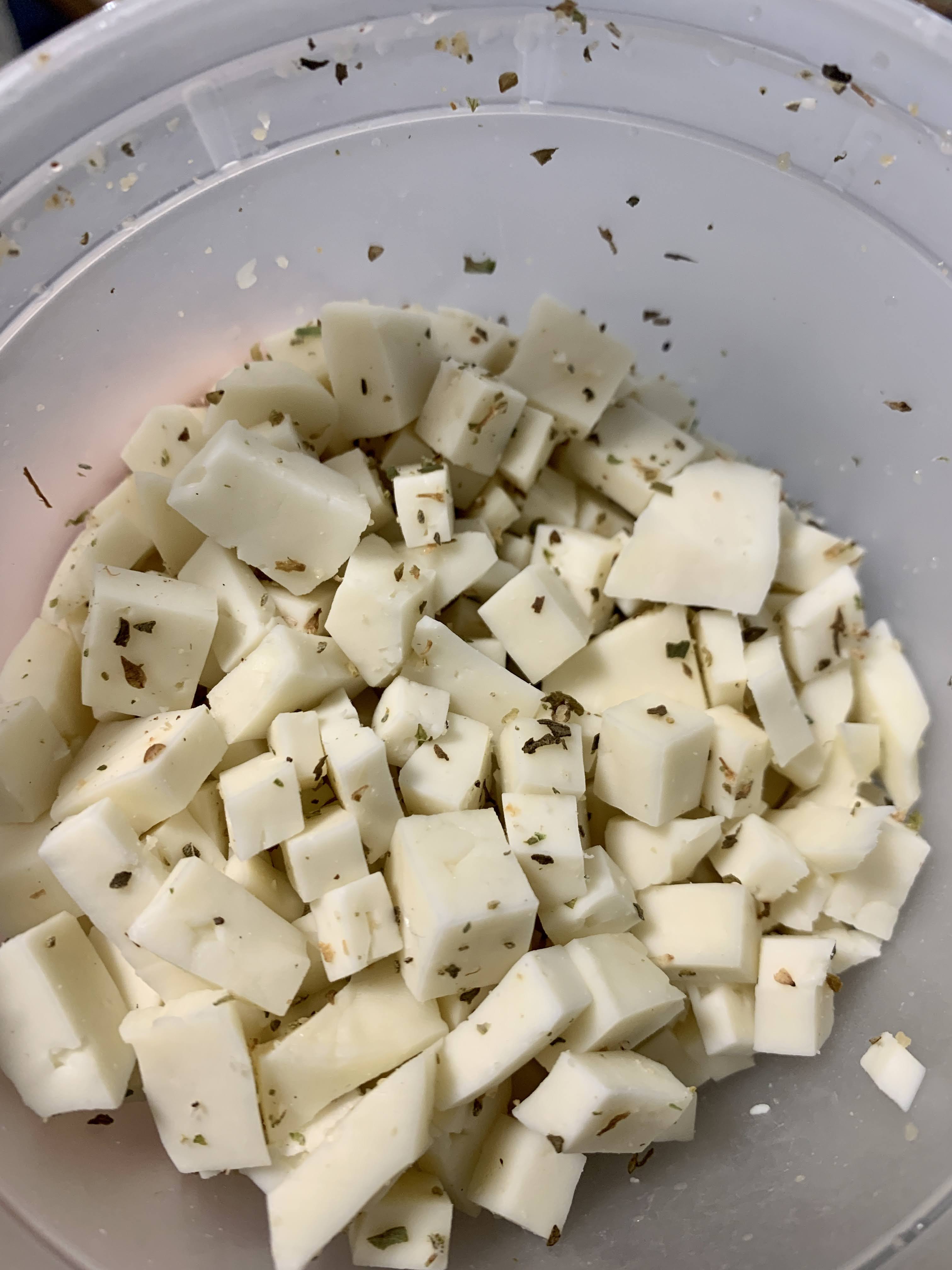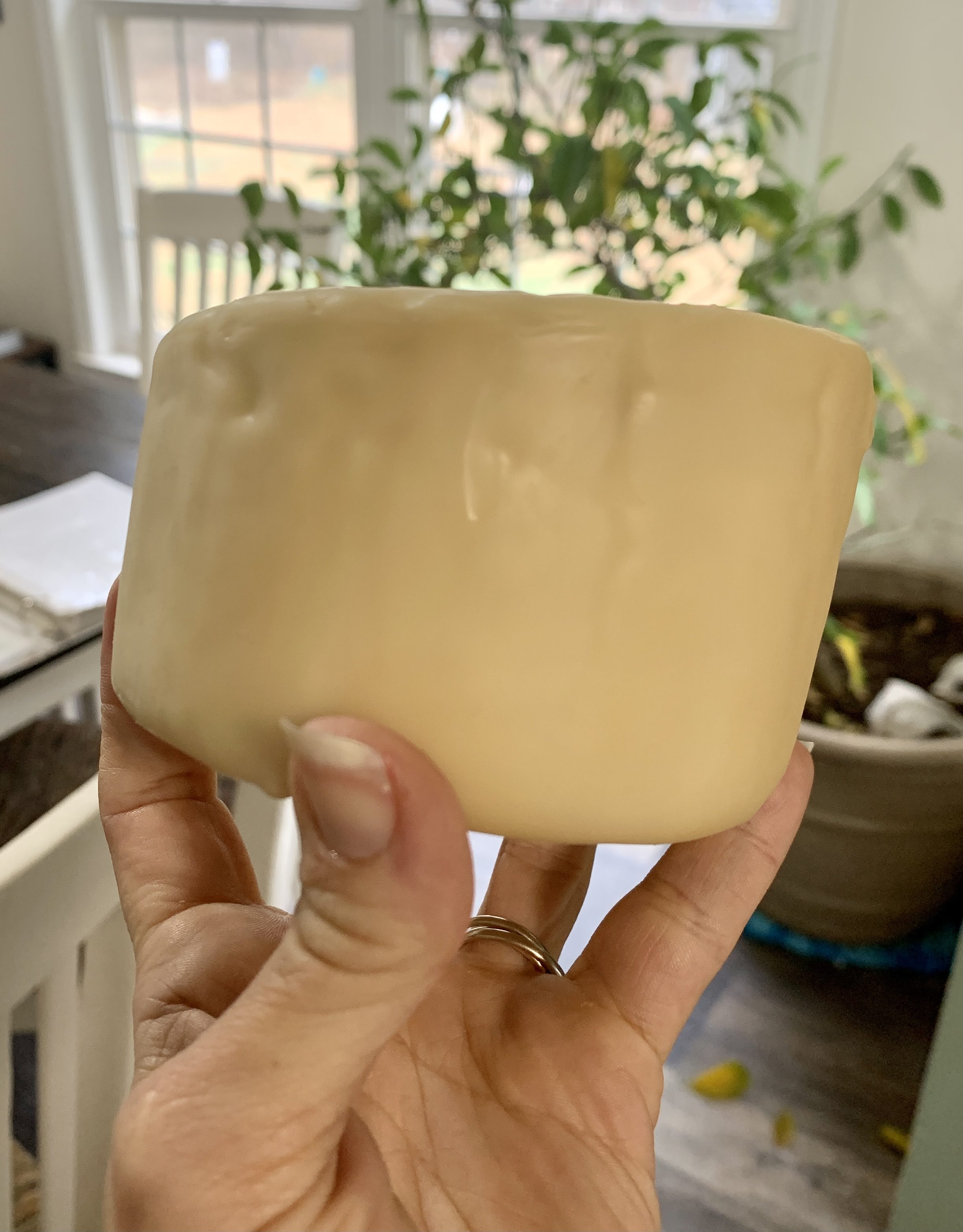
Milking Goats
2022-04-02
I found it. The sweet spot. The exact amount of milk that keeps me on my toes and experimenting and getting good at home dairy life…and not so much that I’m drowning. Figuratively, of course. Our dairy cow was delightful and I truly am looking forward to a time in life where we can revisit raising cows and do it properly. When we were milking our sweet dairy cow everyday and we were separating the cream we got from those 1-3 gallons, and I was trying to get better at making cheese…I was drowning. Goats are a whole different story because of one simple fact: quantity. There’s less animal, less udder, and less milk. Our 4 milking does give me between just shy of a gallon to just over a gallon. I rotate through these uses as needed on top of fresh, raw milk to drink and use in baking:
- Chèvre (classic soft fresh goat cheese)
- Feta (sharp, salty dry cheese)
- Ricotta (spreadable cheese made from the whey)
- Gjetost (sweet, sharp dessert cheese from Nordic countries made from the whey)
- Cheddar (pressed semi-hard cheese, aged)
- Squeaky cheese curds (cheddar cheese curds, salted and eaten fresh)
- Cream cheese (spreadable cheese made with milk and additional cream)
- Yogurt, Kefir, buttermilk (fermented milk variations)
- Cajeta (sweetened goat milk caramel)
Starting in January, we got a few of these every week for 4 weeks.
Then we started doing this every morning (sometimes with help, usually just Neil and me. Unless he’s traveling or I am laid up after surgery…then we fly solo). The milk comes into the kitchen and gets strained into two half-gallon jars where it awaits its fate.
Here are a few iterations of that fate:
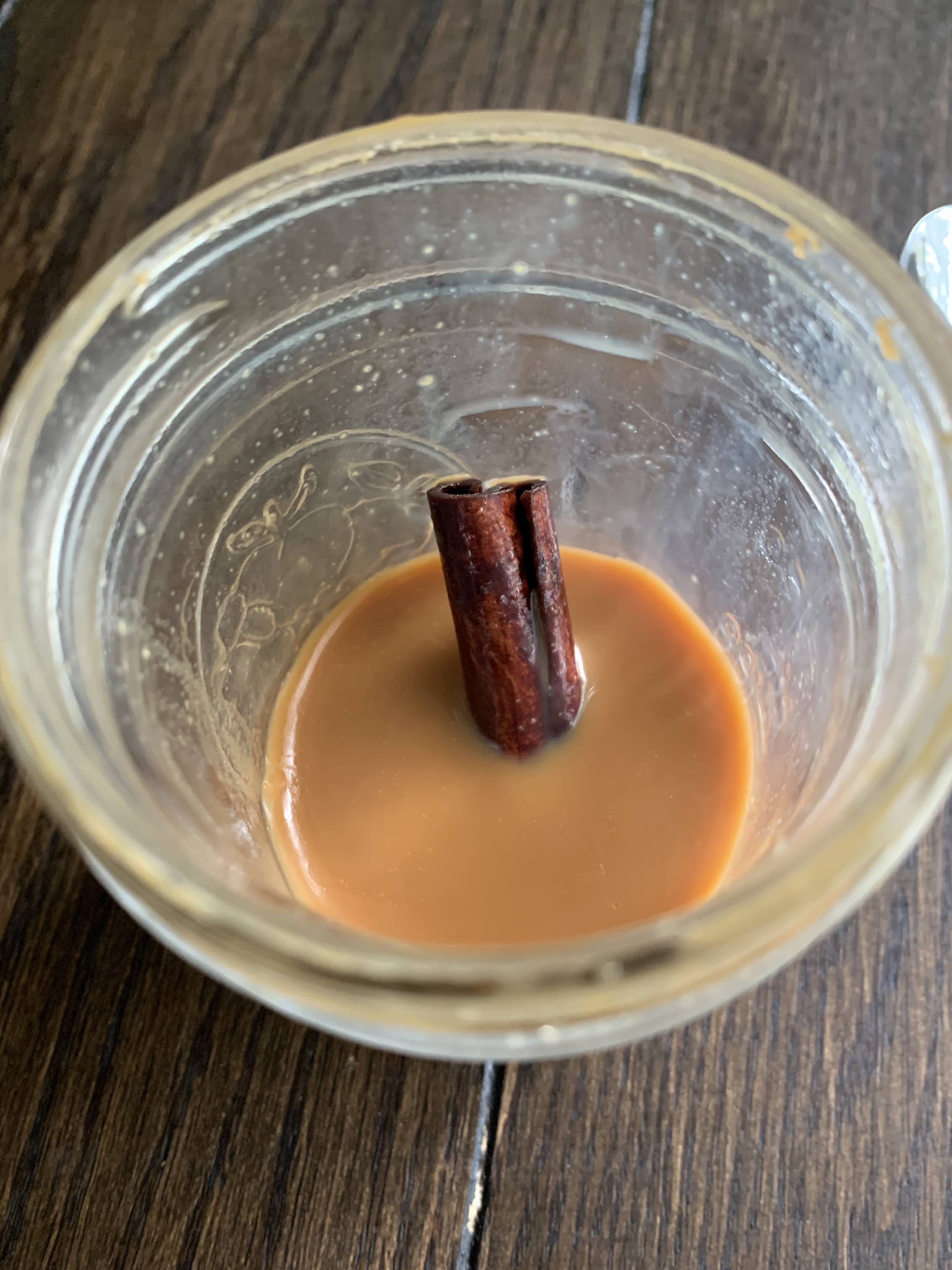
Notice how low in the jar the cajeta is? That’s because it doesn’t last long in our fridge. Best eaten straight up with a spoon. I couldn’t find a picture of the gjetost except at the very beginning of the process. It cooks down for hours until it’s only a small fraction of the whey you start with.
Classic goat cheeses. The top is Chèvre, similar to cream cheese only saltier and much dryer. One of my favorite things ever. Spectacular with fig jam. This is one component of the trifecta of awesome I’m gunning for at the end of the summer: roasted figs with Chèvre drizzled with home-raised honey. Heaven. On a plate.
Then the feta. The milk is cooked and messed with until the curds are allowed to drain in a mold. Then the block is brined in a salt water solution for a few days before it is diced into cubes. I experimented with marinating it in olive oil (infused with garlic and rosemary from my garden)…I haven’t tried it yet, but it will be ready in a few weeks. Otherwise the feta can be eaten or freeze dried. Freeze dried feta is a fabulous crunchy snack.
We finally broke out the cream separator to give it a whirl when we had a back log of two gallons. Fun thing we discovered is that the milk that comes out sans cream has a layer of epic foam. I could eat that all day. The separator doesn’t come out often because it’s a pain to clean all its gut and innards. But dang dude…does it know its business. Next time I don’t think we need quite so thick a cream. This cream however, was eaten straight up with a spoon.
Goat milk cheddar could be yellow. I’d just have to dye it. The curds can be salted, herbed, and eaten straight or they can be salted and pressed. Once pressed I wax it so it can go in the back of my fridge to age until Christmas. That will probably be the most highly anticipated present on my list. Because I’m a geek about hobby farm science and dairy goats.
